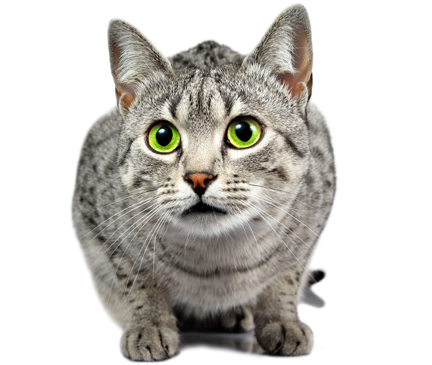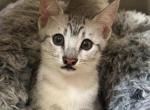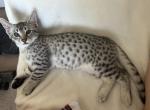

Egyptian Mau Cat Breed Description
Egyptian Mau Traits At A Glance
Active
Playful
Requires Attention
Affectionate
Vocal
Docile
Intelligent
Independent
Health
Grooming
Child Friendly
Pet Friendly
Size: The Egyptian Mau is a medium-sized cat that ranges in size from 6 to 14 pounds.
Characteristics: Egyptian Mau cats are long, graceful medium-sized cats. Their body is muscular and elegant and athletic in appearance. Their head is slightly rounded and wedge-shaped and their eyes are large and almond shaped with slight rounding as well. Their ears are medium-sized and slightly flared.
Temperament: The Egyptian Mau has been a favorite for centuries, and, for good reason. Their coat is incredibly beautiful, but you will truly fall in love with their personality. They are gentle, loving and affectionate. They become very attached to their family but can be shy around new people. While they are more of a quiet cat, they do enjoy playing games and are very intelligent. They love to play fetch and enjoy climbing. They may even perch themselves right on your shoulder. Egyptian Mau's love to learn and love to be rewarded for a job well done. After they are rewarded, they will probably want to cuddle up on your lap for some bonding time.
Care: The Egyptian Mau has a medium length coat but is actually a very easy to care for. Twice a week brushing will keep the thick, beautiful coat looking lovely. Additionally, trim their nails and clean their ears as needed and they will look show quality! Lastly, be sure to brush their teeth frequently to prevent periodontal disease.
Coat: The Egyptian Mau's coat is a beautiful, striking and silky spotted coat. The spotted appearance is it's crowning glory and can come in silver, bronze or smoke colors. The coat is medium in length and has a lovely sheen to it.
Origin: The Egyptian Mau history goes back quite a long way. Egyptians were the first to document their affection for domestic cats. The breed itself is one of the oldest cat breeds in the world and is depicted in Egyptian art work and writings from over 5,000 years ago. In 1100 B.C., a papyrus depicted RA in the form of a spotted cat cutting the head off of an evil serpent named Apep. In another papyrus from 1400 B.C., a spotted cat is retrieving a duck for an Egyptian hunter. These cats were clearly popular, useful and well loved. Most likely, in ancient times they were revered for their usefulness at keeping rodents away but their beautiful appearance has also been well loved and has stood the test of time. The appearance of the modern Egyptian Mau is actually quite similar to the ancient Egyptian Mau depicted in old artifacts.
While the Egyptian Mau is thousands of years old, it did not begin to make appearances in European cat shows until the 1900s. The breed grew in popularity in Europe but, as many breeds did, struggled and battled extinction when World War II occurred. Interestingly, it was a Russian Princess named Nathalie Troubetskoy that helped rescue and revive the breed. She rescued three Egyptian Mau's while in Italy and brought them with her to the United States in 1956. There were two silver females named Baba and Liza and a bronze male named JoJo. Troubetskoy quickly established the Fatima Egyptian Mau cattery and began to grow the breed in the United States. Because of the small gene pool, outcrossing became necessary to grow the breed. Breeders were very selective and worked hard to maintain certain characteristics.
In 1968, the CFF was the first to accept the breed for championship status, and in 1977 the CFA granted championship status, and then lastly TICA accepted the breed for championship status in 1979. In the 1980s, the breed was able to receive a much needed boost of growth when breeder Cathie Rowan brought 13 Egyptian Maus to the United States. Later, in 1991, breeder J. Len Davidson also brought 4 Egyptian Maus to the United States and both times it offered a much needed boost to the Egyptian Mau gene pool. Today the breed continues to enjoy the love and adoration it has for thousands of years and is a favorite among cat fanciers.


